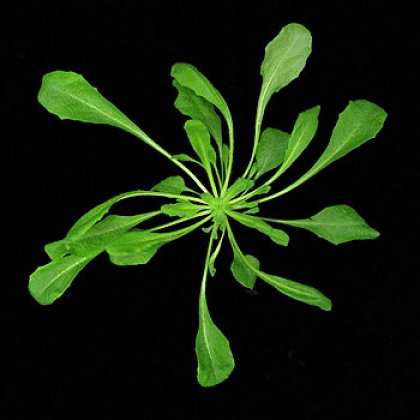
UQ scientists have helped uncover an evolutionary dilemma where plants that develop disease resistance pay a high price for this trait.
Dr Sureshkumar Balasubramanian from UQ’s School of Biological Sciences was a lead author on a paper recently published in Nature that shows plants which are more resistant to disease grow more slowly and are less competitive than susceptible relatives when enemies are rare.
“When you have limited energy sources, it is always a dilemma to decide whether to invest in defence or growth. Investing in defence compromises your growth in the absence of enemies. On the contrary, you can not ignore it either,” Dr Balasubramanian said.
“We saw among a group of plants that some were growing slowly compared to the others, and when we looked closely we found these plants to be making armour required for defence.”
Dr Balasubramanian said the study found a variant of the ACD6 gene in mouse-ear cress (Arabidopsis thaliana) that explained a common phenomenon in plants where one succumbs to disease while its neighbour thrives.
“The plants with this variant make molecules required for defence even before they encounter an attack and are able to combat a wide range of enemies, from bacteria and fungi to insects such as aphids,” he said.
“But you cannot have the majority of population advocating war, even in plant communities.
“It is important for the benefit of the community to have a correct balance. If you invest heavily in defence, it surely compromises your growth.”
The study was initiated during Dr Balasubramanian’s tenure at the Max-Planck Institute for Developmental Biology in Germany with Professor Detlef Weigel, and found the ACD6 gene functioned as a universal weapon in the fight against predators.
“We could show that this gene makes plants resistant against pathogens, but at the same time it slows down the production of leaves and limits the size of leaves, so that these plants are always smaller than those that do not have this variant,” Professor Weigel said.
“But as soon as they are being attacked, the plants with the special ACD6 variant have a leg up compared to plants with the standard version.
“On the down side, at places or in years where there are few enemies, they are penalised and lose out compared to the larger fellow plants. Smaller size eventually leads to reduced number of seeds and hence to fewer progeny.
“Just as in human society, there is no free lunch in nature.”
Other collaborators in the study were: Marco Todesco, Sridevi Sureshkumar, Christa Lanz and Roosa Laitinen from the Max Planck Institute for Developmental Biology; Tina Hu, Yu Huang and Magnus Nordborg from the University of Southern California, Los Angeles; Brian Traw, Matt Horton, Joy Bergelson and Justin Borevitz from the University of Chicago; Petra Epple and Jeff Dangl from the University of North Carolina; Christine Kuhns and Volker Lipka from the University of Göttingen and Chris Schwartz and Joanne Chory from the Salk Institute in La Jolla.
Media: Dr Sureshkumar Balasubramanian (07 3365 2045, mb.suresh@uq.edu.au), Professor Detlef Weigel (weigel@weigelworld.org) or Tracey Franchi, Communications Manager School of Biological Sciences (07 3365 4831, t.franchi@uq.edu.au)
.jpg)


